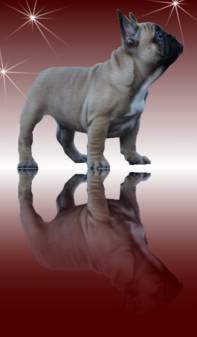
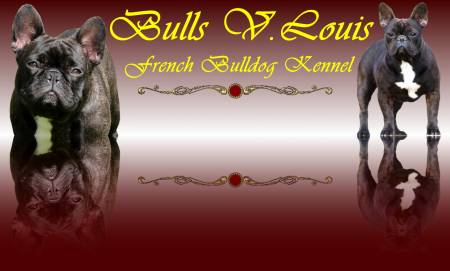

 |
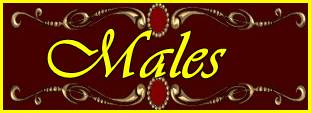 |
 |
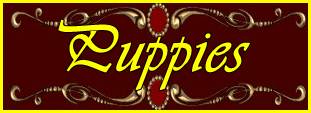 |
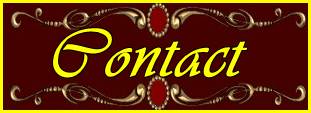 |
 |
 |
 |
 |
 |
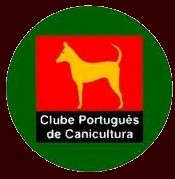 |
 |
  |
 |
Because of its adaptability, quiet as it is not barking, the French bulldog breed is ideal for apartment
living, apartment houses or small, needs exercise for 15 minutes daily. It is an ideal dog for long walks
but is a good pet, sociable, cheerful and playful.
It is a small dog, funny and friendly, which stands as a companion dog and only for affection.
They are friendly, compatible with other pets, particularly affectionate with children and very protective of them,
especially females. This breed rarely barks, except when you need to attract attention, when you need something or
when you are upset. It is a good watchdog that will bark when you have a noise is protective of the home and its owners,
and will always be alert. It is an intelligent dog, but highly opinionated for his remaining attack dog, so long and should
educate them thoroughly. Quiet, who likes to sleep a lot.
They prefer cold climates as they are quite sensitive to high temperatures. It is advisable to avoid exposing
it to excessive heat and be careful with being overweight, which can cause respiratory problems.
History:
The French Bulldog is considered a small-sized mastiff. The French bulldog's origins date back to early 1850. Its beginnings
are found in England with the English bulldog, its closest relative, descended from mastiff type breeds.
It is likely that the French bulldog is the result of various crosses between the toy bulldogsvenidos of Great Britain
and several local dogs.
Her grace and character quickly captivated high society, which greatly boosted its popularity.The crosses were
made by lovers of the breed in the neighborhoods of Paris in 1880. Initially, the French bulldog was a dog of the people,
with the masters to butchers and coachmen, but later learned to conquer the high society and the art world due to its
original appearance and unique character, spreading rapidly.
French Bulldog Standard
ORIGIN: France.
DATE OF PUBLICATION OF THE ORIGINAL VALID STANDARD: 28.04.1995.
UTILIZATION: Companion, Guard and toy.
CLASSIFICATION FCI: Group 9 compañía.Sección Dogs pequeña.Sin size 11 Molosoides working trial.
HEAD:
This must be very strong, broad and square, and must be covered by skin, forming almost symmetrical
folds and wrinkles. The head of the Bulldog is characterized by a massive contraction of maxillo-nasal, and the
skull has gained in breadth what it has lost in length.
CRANIAL REGION:
- Skull: Broad, almost flat, the forehead is full. The brow ridges are prominent and are separated by a particularly developed furrow between the eyes. The furrow must not extend onto the forehead. The occipital crest is hardly developed.
- Naso-frontal depression (Stop): Very sharp.
FACIAL REGION:
- Nose: Broad, very short, raised, the nostrils are wide open, are symmetrical and extend obliquely backwards.
The inclination of the nostrils and the nose-up, should be allowed, however, a normal nasal breathing. - Muzzle: It is rather short, broad and has concentric symmetrical folds coming down on the upper lip
(length: 1 / 6 of the total length of the head). - Lips: Thick, a little loose black. The upper lip to the bottom in the center and completely cover the teeth, which should
never be visible. The profile of the upper lip is descending and rounded. The tongue should never be visible. - Jaws: Wide, square, strong. The lower jaw traces a wide curve that ends in front of the upper jaw. With mouth closed,
the prominence of the lower jaw (prognathism) is moderated by the curvature of the branches of the mandible.
This curvature is necessary to avoid an outstanding too noticeable in the lower jaw. - Teeth: The lower incisors are never found behind the upper incisors. The lower incisors is rounded arch. The jaw must
not show or lateral deflection, or torsion. The separation of the incisive arcades is not narrowly tailored because it is
essential that the upper and lower lips come together to completely cover the teeth. - Cheeks: The cheek muscles are well developed, but never excel.
- Eyes: awake expression, set low and well away from the nose and especially the ears.Are dark, fairly large, well rounded, slightly protruding, the sclera is never visible when the animal looking straight ahead. The eye rims should be black.
Ears: Medium size, wide at the base and rounded at the tip. Are erect, set high, but not too close to each other.
The pavilion is open to the front. The skin should be thin and soft to the touch.
NECK:
Short and slightly arched. No dewlap.
BODY:
- Topline: The top line is raised progressively at the spine and then descend rapidly towards the tail.
- Back: Broad and muscular.
- Loin: Short and broad.
- Croup: Oblique.
- Chest: Cylindrical and well let down. The ribs are barrel shaped, very rounded.
- Sill: It is very open.
- Belly and flanks: Raised, but not tucked up.
TAIL:
Short, set low on the rump, attached to the buttocks. Thick at the base, knotted or kinked naturally and tapering
at the tip. Even if the dog is alert, the tail should be below the horizontal. The relatively long tail (not to exceed the hock),
bent and pointed, is accepted, though not desirable.
TIPS:
FORMER MEMBERS: Seen in profile and from the front, regular aplomb.
- Shoulder: Short, thick, strong and muscular appearance.
- Arm: Short.
- Elbow: Strictly sticking to the body.
- Forearm: Short, wide apart, straight and muscular.
- Carpus and metacarpus: Solid and short.
Hindquarters: Strong and muscular, somewhat longer than previous ones, thus raising the hindquarters.
Seen in profile and from behind, have regular aplomb.
- Thigh: Muscled, firm but not too round.
- Hock: Fairly low. It is not too angular, and above all not too straight.
- Hock: Solid and short. The Bulldog should be born without dewclaws.
FEET:
are very compact, nails short, thick and separated. The pads are hard, thick and black. In brindle dogs nails should be black.
In dogs caille (fawn brindle dog with medium white patching) and fawn on (with medium white patching or too extended)
dark nails are preferred, but not be penalized in color.
MOTION:
Step loose, the legs moving parallel to the plane of the body.
COAT
HAIR:
beautiful, satin, flat, shiny and smooth.
COLOR:
- Uniform tawny tone, whether striped or not, or white patches moderately extended.
- Fawn, whether or not tabby with white patches or fairly widespread.
- We accept all tawny hues, from red, to coffee with milk. The entirely white dogs are classified under the
category of "fawn brindle with white patches widespread." If a dog has a very dark nose and dark eyes with dark
eyelids, can be tolerated exceptionally some depigmentation of the face, as long as the animal is very beautiful.
SIZE AND WEIGHT:
For a bulldog in good condition, the weight must not be below 8 kg nor over 14 kg, since the size is in proportion to weight.
FAULTS:
Any departure from the foregoing points should be considered a fault and the seriousness with which is considered the
degree of deviation from the standard.
- Nose close or cramped, and chronic snorers.
- Lips that are not attached to the front.
- Depigmentation of the lips.
- Light eyes.
- Dewlap.
- Raised tail too long or abnormally short.
- Elbows unglued.
- Straight hock or moved forward.
- Incorrect movement.
- Hair too long.
- Spotted coat.
SERIOUS FAULTS:
- Incisors visible when mouth is closed.
- Language apparent when the mouth is closed.
- Stiffness in the movements of the forelimbs.
- Discolored spots on the face, except in the case of brindled fawns with medium white patching caille and fawns with little white patches or widespread.
- Excessive or insufficient weight.
ELIMINATING FAULTS:
- Truffle color is not black.
- Lip.
- Lower incisors placed behind the upper incisors.
- Canines constantly visible when the mouth is closed.
- Heterochromic eyes.
- Ears not pricked.
- Mutilation of ears, tail or dewclaws.
- Absence of tail.
- Spurs on the hind legs.
- Coat black and tan, gray rat, or brown.
NOTE: Male animals should have two apparently normal testicles fully descended into the scrotum


